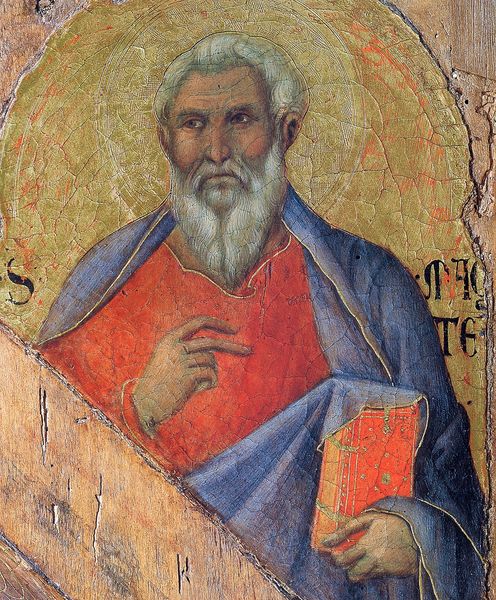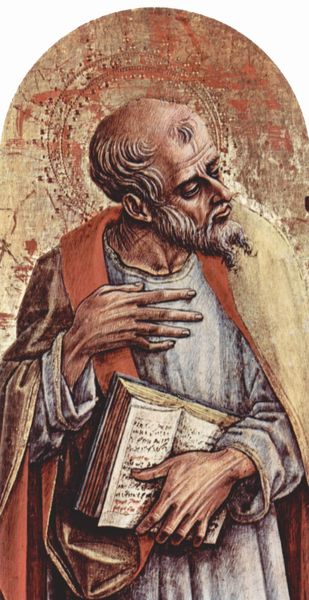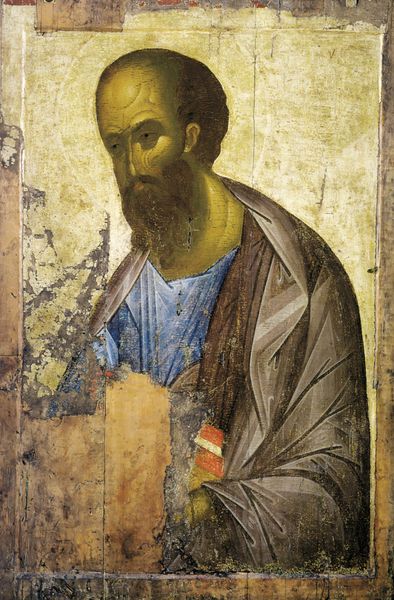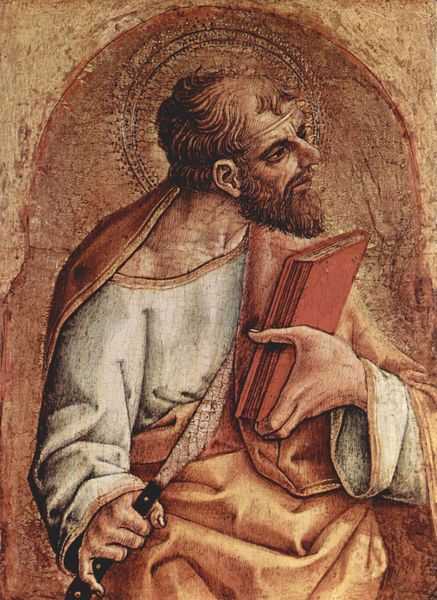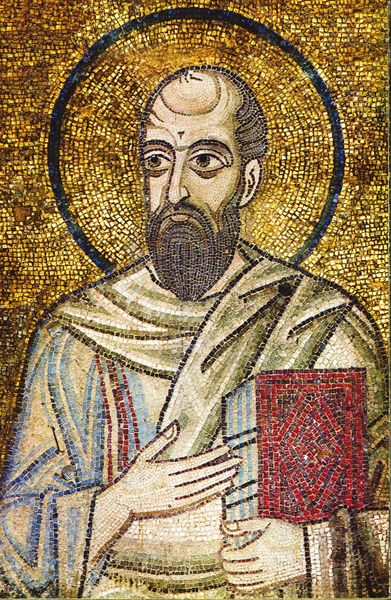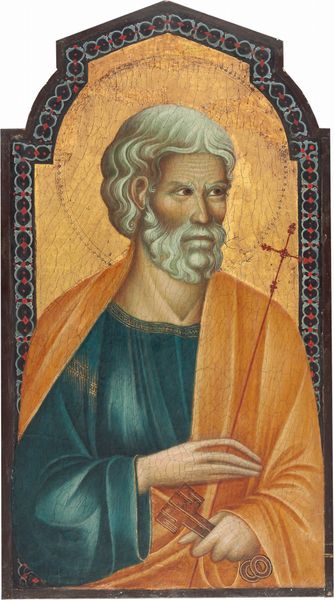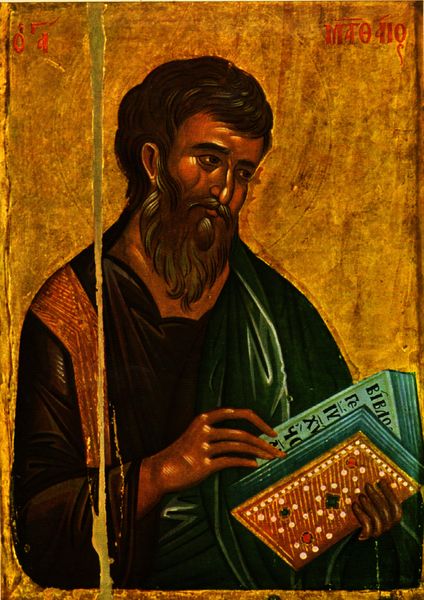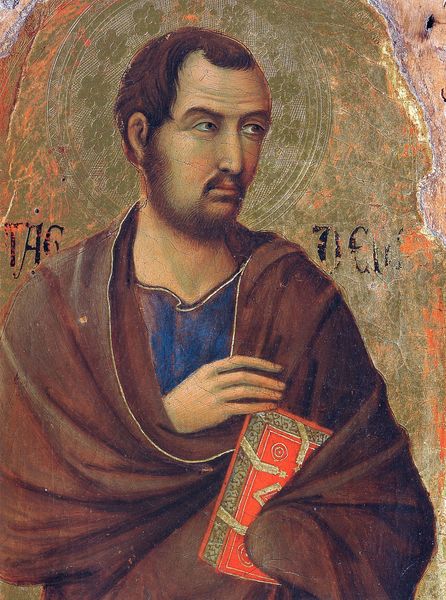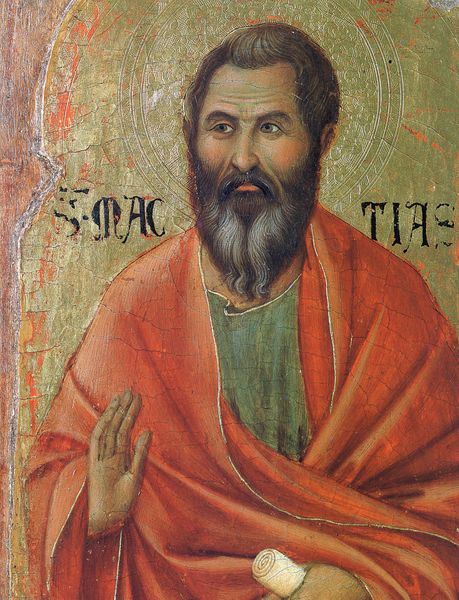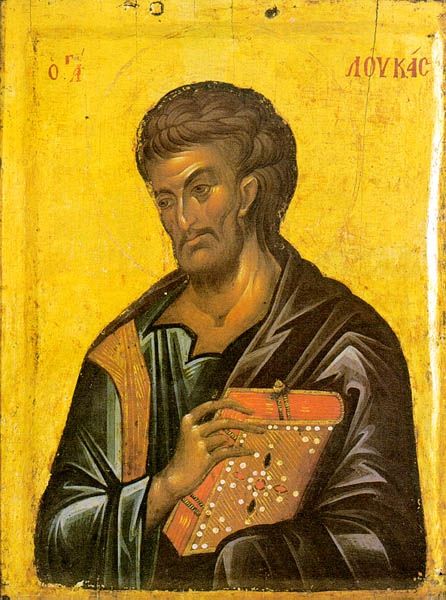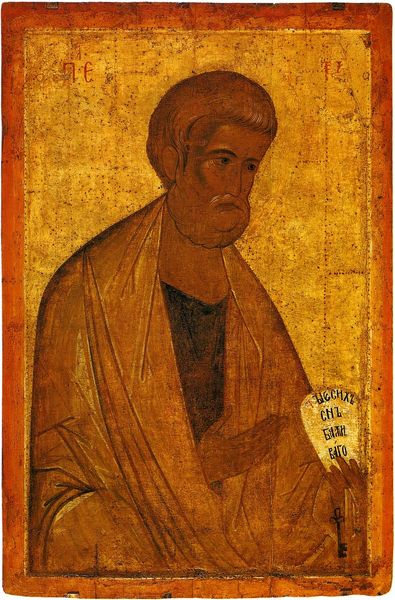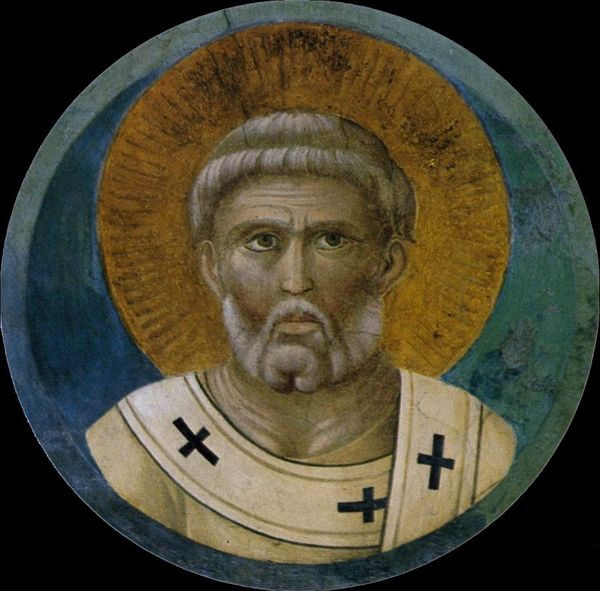
Apostle Peter 1300
0:00
0:00
orthodoxicons
Dumbarton Oaks Research Library and Collection, Washington, DC, US
tempera
#
portrait
#
byzantine-art
#
medieval
#
tempera
#
oil painting
#
portrait art
Copyright: Orthodox Icons,Fair Use
Editor: So, here we have "Apostle Peter," a tempera on panel work from around 1300. The artist is unknown. It's striking, in a way, like it’s trying to tell me something ancient and important. What jumps out at you? Curator: The most compelling aspect for me is the visual vocabulary being employed here. Keys, for example, are prominently displayed – more than simple attributes, they speak to St. Peter as the gatekeeper of heaven, but also, more profoundly, the cultural memory of transfer of power and responsibility. Editor: Power, okay I can see that. The gaze seems very serious as well. But what do you mean by cultural memory? Curator: How symbols persist and evolve. Think of the cross in the background. It isn't merely a symbol of faith; it is a complex distillation of suffering, redemption, and identity. The image accesses the deep emotional responses tied to these meanings, carried down through generations of believers. Editor: It's almost like a shortcut to feeling. A symbol condenses complex meaning so we instantly “get it.” Curator: Precisely! And Byzantine art, in particular, is very attuned to this idea. Even the aging and cracking of the paint surface—what we call craquelure—becomes part of the artwork’s symbolic language, a tangible reminder of time and the enduring quality of faith. Do you notice anything about the light? Editor: It’s all gold and sort of flat, there aren't clear shadows? Curator: Indeed! That use of gold symbolizes divine light. But the absence of strong shadows also pulls the figure out of realistic space, pushing the figure forward to confront the viewer, asking you to contemplate your place within that grand narrative. What do you make of his expression? Editor: It seems to embody resolve, like this figure, St. Peter, knew the weight of his responsibilities. Curator: Indeed! And isn't it powerful how an image crafted centuries ago can still spark these contemplations within us today? Editor: Absolutely, it’s like unlocking a secret code to the past. Thanks for pointing all of that out.
Comments
No comments
Be the first to comment and join the conversation on the ultimate creative platform.
